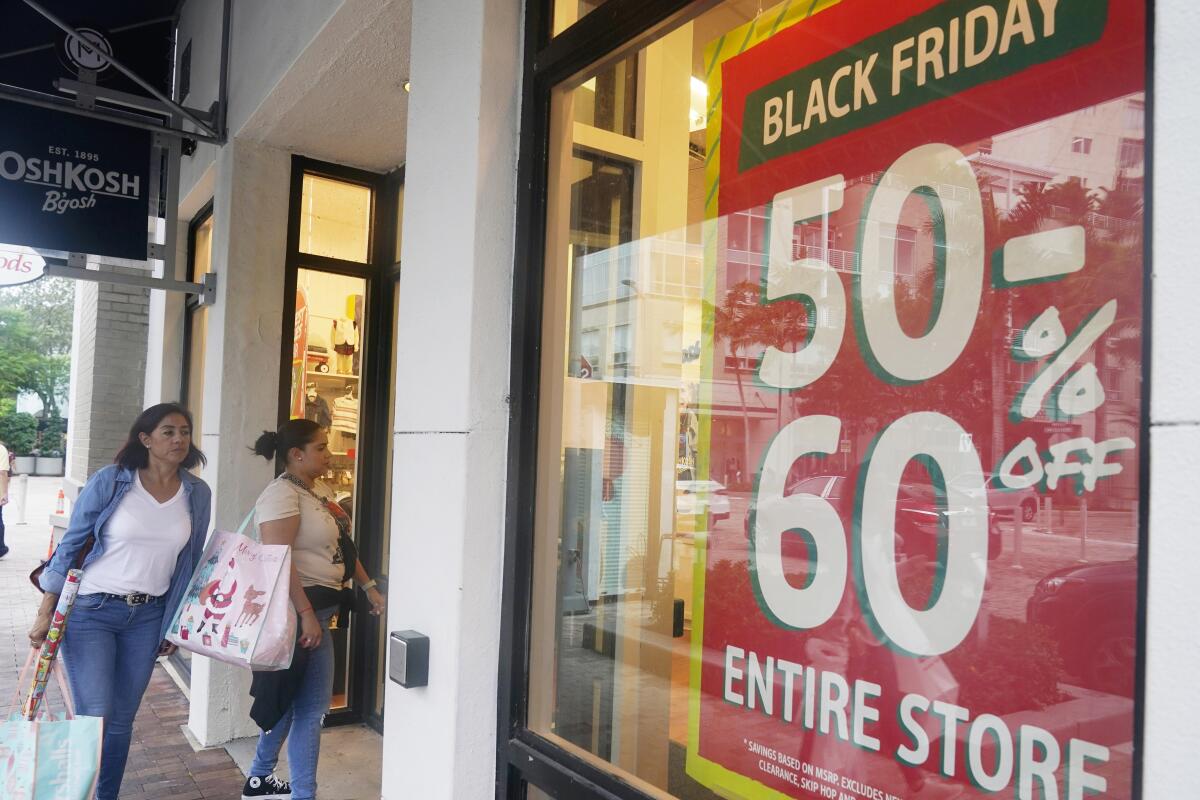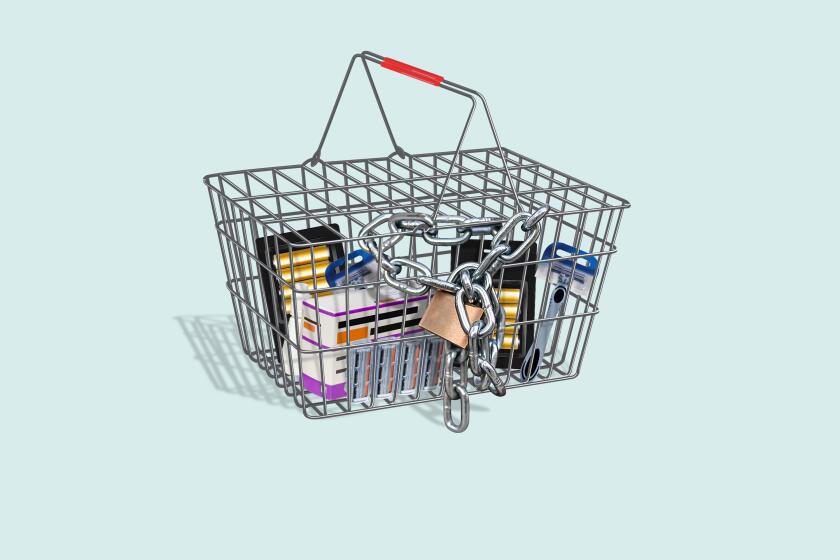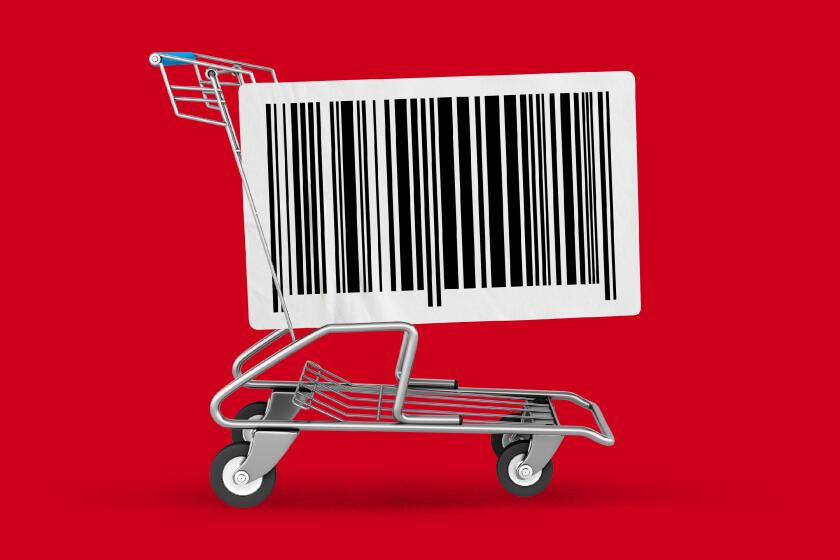As shoppers hunt for Black Friday deals, inflation means bogus bargains are everywhere

- Share via
Consumers holding out for big deals — and some much-needed relief from soaring costs on just about everything — may be disappointed as they head into the busiest shopping season of the year.
Although retailers are advertising sales of up to 70% off clothing, TVs and other products, many items will still cost more than they did last year because of inflation, meaning that finding a true bargain may prove to be a challenge.
In September and October, shoppers paid roughly 18% more for furniture and appliances than they did a year earlier, according to analytics company DataWeave, which tracks prices for hundreds of thousands of items across roughly three dozen retailers including Amazon and Target. For toys, they paid approximately 2% more.
Things looked a bit better for consumers shopping for clothing — they paid nearly 5% less compared with last fall, according to DataWeave. Meanwhile, prices held steady for footwear.
“It’s just a weird time for everybody to figure out what is the right price, and what is the real price,” said Nikki Baird, vice president of strategy at Aptos, a retail technology firm. “Consumers are really bad at discount math, and retailers are fully aware of it and do everything they can to take advantage of it.”
Drugstores are locking up more products, frustrating shoppers. The Times surveyed stores and found vastly different approaches to preventing theft.
William Wang, 24, who teaches high school math, said he’s more likely to notice price increases on everyday items — such as a quesadilla that now costs $8 at his local deli — than for gifts he’s going to spend money on once a year.
“I do feel like everything’s more expensive,” the Brooklyn resident said. “But I mainly keep track of it with small items, like food.”
The latest government retail sales report shows sales rose last month even when adjusting for inflation. That underscores some resiliency among shoppers heading into the Black Friday weekend, the kickoff to the season.
But cracks are forming.
Third-quarter earnings results from major retailers show shoppers aren’t willing to pay full price and are waiting for deals. Kohl’s, Target and Macy’s all noted that Americans have also slowed their spending in the last few weeks.
From the vital to the whimsical, this unique gift guide features tech-enhanced products to help you unplug or stay connected in your busy life.
It’s a dramatic change from last year’s holiday period, when shoppers began their quests for holiday items as early as October for fear that they wouldn’t get what they needed amid supply chain problems. They were also flush with cash from government stimulus money. In addition, retailers were struggling to bring in items, so they didn’t need to discount as much.
Michael Liersch, head of advice and planning at Wells Fargo, said that this holiday shopping season, it’s more likely that things will “appear discounted or feel discounted, or it will seem like there are big offers” but that between inflation and “shrinkflation” — when manufacturers quietly shrink package sizes without lowering the price — it’s often not the case.
That trend played out in a recent spot check by DataWeave of different items. For example, a Cuisinart two-speed blender, listed at $59.99 but discounted 25%, was available for $44.99 at grocery chain Fred Meyer. But it was still more expensive than last year’s blender, available for $39.99, after a 20% discount off a lower list price of $49.99.
At Kohl’s, shoppers paid more for Nunn Bush Baker Street men’s dressy shoes this fall than a year earlier when discounts were actually bigger and the list price was lower. The shoes were available for $79.99 after a nearly 16% price cut from the $95 suggested price; last year, the shoes were available for $59.99 after a 29% discount on a lower list price of $85.
Kevin Brasler, executive editor of Consumers’ Checkbook, a nonprofit consumer organization, said its researchers spent 33 weeks starting Feb. 9 tracking sale prices at 25 major retailers.
Inflation hasn’t been this high in decades. We compiled a snapshot of prices at ten grocery chains in the L.A. area. How does your local store stack up?
They found most stores’ sale prices — even those that promote big savings — are bogus discounts, with retailers offering the same “sale price” more than half the time. In fact, at many retailers, the “regular price” or “list” price is seldom, if ever, what shoppers pay, Brasler said.
Still, inflation-battered shoppers such as Yoki Hanley are willing to take their chances and hold out for a bargain. So far, she doesn’t feel like she’s getting good deals for her eight grandchildren and plans to delay her buying until the week before Christmas.
“Everything went up so my little nest egg disappeared a whole lot quicker than I expected,” said the St. Croix resident. “I will wait until the last minute. They’ll get it, but it’s coming late.”
More to Read
Inside the business of entertainment
The Wide Shot brings you news, analysis and insights on everything from streaming wars to production — and what it all means for the future.
You may occasionally receive promotional content from the Los Angeles Times.












